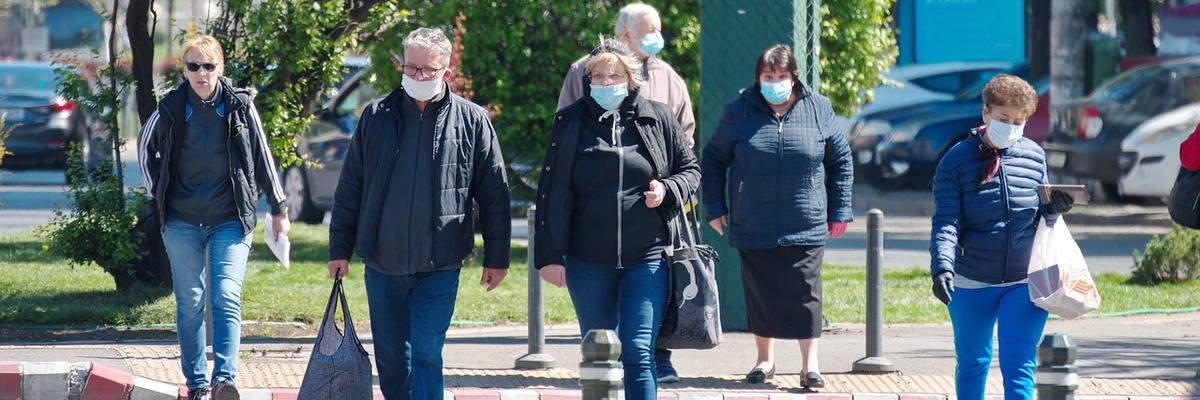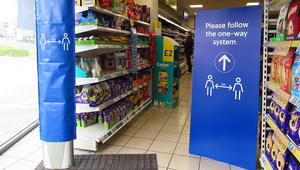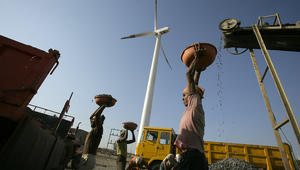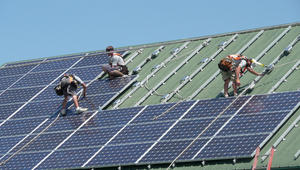Commentary series: Covid-19 and climate change
By Alice Creasy
30 April 2020
From Delhi to Dundee, New York to Newcastle, people across the world are confined to their houses and flats, trying to figure out the best way to work, parent, live and survive from home. Allowed out for only essential trips or for one limited amount of (local) exercise, people are being forced to appreciate the value of outside spaces and explore new ways of moving through cities and towns without using a car.
While this has brought with it many benefits, it has also put pressure on pedestrian infrastructure as many people struggle to maintain social distancing on busy urban walkways, towpaths and narrow pavements. With mounting pressure on pedestrian infrastructure in cities, this blog explores some of the ways in which citizens and governments are making space for people in towns and cities and question what this means for the future of urban travel.
Safe spaces?
The impact that lockdowns have had on travel has been stark; from local roads to international airspace, levels of movement have plummeted. In the UK for example, road travel has fallen in recent weeks to levels not seen since 1955. Similar patterns have been seen across the world and pollution levels have dropped in some of the planet’s worst-affected cities including Mumbai and Beijing.
In the UK, as levels of air pollution dropped in the week the lockdown was announced, sales of bikes and trainers rose dramatically as gyms closed and people looked for a reason to leave the house. In many ways, this trend has been positive as people are rediscovering their communities, appreciating the value of nature and improving their physical health. However as local walkways and pavements, parks and proms become busier with people desperate to leave the confines of their homes, social distancing becomes harder.
As warmer weather approaches and despite Britons are being urged to stay at home, many parks and other green spaces have become dangerously busy, with some being forced to close and activities such as sunbathing banned across the country. However, the decision to close parks and ban certain activities has been criticised by some commentators who point out the detrimental impact this could have on those living in inadequate accommodation with no outside space who need public green spaces more than ever.
Reclaiming the streets
The disproportionate impact these measures are having on economically deprived communities was highlighted in a recent Guardian piece which noted that a third of all land in the wealthiest 10% of London wards was taken up by private gardens, compared to just over a fifth in the poorest 10%. It also noted the potential for these restrictive measures to have a particularly acute impact on BAME communities who make up half of residents in the poorest wards, compared to 20% in the richest 10%.
With increasing pressure on pedestrian infrastructure, governments and citizens across the world are finding ways to make room for people in the city. In the UK, Hackney Council has announced plans to use low-cost planters and bollards on selected streets to protect people from a growing number of speeding drivers on the borough’s roads. The plans will still allow access to emergency vehicles and key workers but prevent rat running drivers.
Similarly in Richmond, London an initiative coordinated by local community organisations and businesses has seen bollards being used to widen pavements. Outside of the capital, in Bristol, some citizens have taken matters into their own hands by spray painting a ‘runners lane’ onto the road surface in an attempt to help maintain social distancing.
Opportunities for all
As the weather improves, more people are using parks and pavements – so why not give them the space they need by closing roads and enhancing cycling infrastructure? Doing so would reduce the likelihood of contamination, improve people’s mental and physical wellbeing, and help citizens feel more connected to and positive about the places they live.
As people everywhere look for reasons to leave the sofa and breath some fresh air, perhaps now is the time for towns and cities to take a bold stance against cars by making room for pedestrians and expanding green spaces. Not only would this help to keep people safer during the current pandemic, but it would also pave the way to cleaner and healthier cities where at the moment roughly 40,000 people die each year because of air pollution – often in the country’s most deprived neighbourhoods.
With the trend of low emission zones and car-free city centres present in city plans even before the lockdown took hold, this could be an opportunity to accelerate that change and not only reduce the immediate risk of Coronavirus but create healthier, happier and more just cities for years to come. Perhaps a small silver lining might be gained from this crisis, as what appeared impossible might actually be possible on the journey to sustainable transport.
This is an edited version of an article was first published in LGiU, 14 April 2020
Alice Creasy is a Network Analyst with the Place-Based Climate Action Network ([PCAN)
Image: Silviu Costin Iancu from Pixabay




